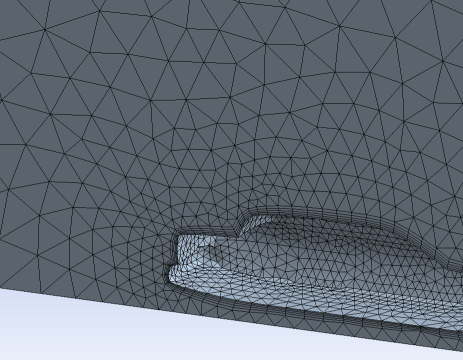The Triangle Surface Mesher control determines which triangle surface meshing strategy will be used by patch conforming meshers. In general, the advancing front algorithm provides a smoother size variation and better results for skewness and orthogonal quality. The following options are available:
Program Controlled - This is the default. The mesher determines whether to use the Delaunay or advancing front algorithm based on a variety of factors such as surface type, face topology, and defeatured boundaries.
Advancing Front - The mesher uses advancing front as its primary algorithm, but falls back to Delaunay if problems occur.
Note: If the mesher falls back to Delaunay, the edge mesh from the advancing front algorithm could still be used and in some rare cases could lead to meshing failures. Switching to the Program Controlled option could fix the issue as the starting edge mesh could be better.
The figures below illustrate the difference between the Program Controlled and Advancing Front options.




